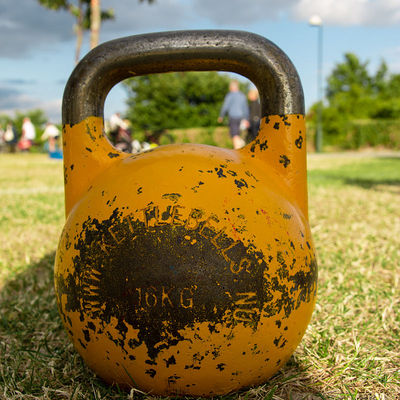Exercises to Help Deal With Stress

Stress, by definition, is a natural mental and physical response to anything that disrupts our environment.
Research has shown that there are certain exercises which may help us deal with stress, and incorporating them into our routines when we feel stressed can help us feel more productive and happy.
Three different kinds of stress
When doing research for this post, I was surprised to learn that there are three diferent kinds of stress:
- Acute stress, which is a brief response to events that have recently occurred, or something you are worried about in the near term
- Episodic acute stress, which is an ongoing series of acute stress events, caused by worrying or temporary life circumstances
- Chronic stress, which goes on over a period of years, and is associated with things like poverty, illness, and traumatic experiences - if you have this kind of stress, please get help!
Here I’ll talk about managing one specific kind of stress, acute stress, with a few different physical exercises.
Lifting Heavy Objects

Lifting weights and exercising is something I do pretty regularly, and I view it as a long-term investment in my physical health.
However, the kind of lifting I am talking about here is not so much exercise, but rather a way to engage your body when your brain is feeling worried.
What to do
When you start feeling stressed simply lift a heavy weighted object, such as kettlebell or a dumbell. While holding the heavy object, try walking around. Pay attention to how it feels, and let the sensation of weight bring you back into your body.
If you’re feeling a mild amount of stress, walking around may be enough. If you’re in true flight or fight mode, which is how I get before speaking in front of people, you can perform some exercises. I won’t get into the specifics of those here, but personally I would recommend goblet squats, kettlebell swings, or another full body compound exercise.
In a pinch: try pushups
If you don’t have a kettlebell or dumbell handy, you can always do pushups. If you’re feeling really anxious, you might surprise yourself at how many you can do!
Why it works
This strategy works because when we’re feeling stressed, our brains are in fight or flight mode. Giving your body something heavy to lift satisifies the need to fight, giving you a physical outlet for your stress.
Lifting heavy objects also engages your nervous system quite a bit. Sometimes when we’re feeling stressed, we have a disconnect between our minds and bodies. Because our nervous systems is literally the link between our brain and our body, engaging it by lifting something heavy can re-establish a mind-body connection.
4-7-8 Breathing
4-7-8 breathing is a technique you can use to quickly calm your brain and body. I use it sometimes when I am trying to go to sleep, but in my experience it is an effective way to deal with stress.
The nice thing about 4-7-8 breathing is that you can practice it anywhere at anytime, no special equipment required.
What to do
Each number in 4-7-8 breathing refers to the different stages of a single breath. The basic idea here is to breath in for 4 seconds, hold in your breath for 7 seconds, then exhale for 8.
Here is how to practice 4-7-8 breathing:
- Sit or stand upright with a good, straight posture
- Exhale and empty your lungs completely
- Paying attention to your breath, inhale while counting to 4 in your head, taking a deep breath
- Hold your breath and count to 7
- Finally, exhale slowly while counting to 8
Why it works
4-7-8 breathing is a kind of mindfullness activity, which brings attention back to your body and your surroundings. I think of it as a kind of mini-meditation that I can practice throughout the day.
Get outside

When my daughter is having a hard time controlling herself inside, it’s usually a sign that we should get outside and play. After playing outside for a while, all of her behavior issues usually disappear and she is much happier!
There is a lot of research which shows that getting outside for two hours per week can provide a significant boost to physical and mental health.
How to get outside more
Getting outside is rather simple. The challenge is to get outside enough. Ideally, we could spend an hour or more in nature each day, but oftentimes life gets in the way. Here are a few strategies you can use to build more outdoor time into your life:
- Invite friends to join you on a hike or bike ride
- If the weather is nice, sit outside and have dinner
- Take trips or vacations to outdoor places
- Go on a camping trip
Managing your stress means managing your attention
When you’re worried about something, it’s usually something out of your control, and not worth worrying about. If you can manage your stress, it means you can manage your attention and focus on something worth worrying about.
